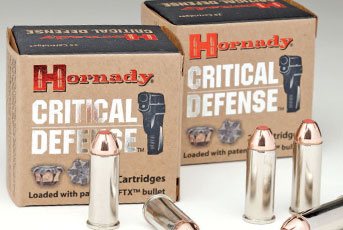Case Histories: 44 Special
- By Pete Moore
-
0
 Comments
Comments
- Last updated: 25/11/2016

Wheelwrite considers at a round much over looked due to its magnum sibling
We sort of cross continents to find the parents of this month’s subject. In 1870 Smith & Wesson developed a black powder cartridge for the Russian Army for use in their S&W break top revolver. Known as the .44 S&W Russian it was a dumpy, rimmed, straight walled design. It, in turn, owed much to the .44 American that had been launched a couple of years earlier by Smith & Wesson. It soon became a popular calibre with the domestic American market, offering modest recoil and exceptional accuracy. However, its nemesis was the introduction of smokeless propellants. Until this time, a .44 or .45 calibre compact cartridge had been seen as the optimum for revolver use, with S&W, Colt, Webley and others all competing to offer the best and newest revolvers to the massive market of the day.
RETRO COMPATIBILITY
However, the case capacity of the Russian was simply too small to make best use of this new chemical wonderment. Whilst S&W continued to catalogue a 246 grain load as well as 11 5grain target option until the beginning of the first World War, they were forced to remodel the cartridge design. The revised .44 S&W Special surfaced in 1907 followed a year later by their S&W New Century revolver. Colt quickly realised the potential of the cartridge and introduced a chambering too. The most significant dimensional change being an approx increase of 0.19” in the case length. The added benefit was the fact that these new revolvers could also chamber the older Russian cartridge.
PUSH AND PULL
The popularity of the .44 S&W Special has cycled several times. Whilst the performance of the original .246 grain design was modest, it continued the .44 calibre tradition of comfortable recoil and superb accuracy. However. frustration with its tardy 760+ fps (Elmer Keith called it a disgrace!) led many early experimenters to work with alternative bullet designs, longer barrels and different propellants. Ultimately, it was the work of Elmer Keith that is best remembered, not only adding 0.125” to the case length and creating the legendary .44 Magnum; ‘the world’s most powerful handgun’ (at the time of Dirty Harry), but also for reviving the fortunes of the Special with a raft of improved loadings. With the use of a firm crimp, a 250 grain, hard-cast lead bullet and 13 grains of 2400 propellant it became possible to approach 1000 fps. Following the commercial introduction of the .44 Remington Magnum in 1956 the Special again began to lose its appeal – to be revived by the Cowboy Action Shooting (CAS) fraternity in the 1980’s.
MORE THAN A CURIOSITY
The plethora of modern and antique lever action rifles that will chamber the cartridge, holding a couple of rounds more than with .44 Mag, means that it continues to have both a practical as well as a collectible appeal. Handloaders are extremely well served with dies, bullets and a wide choice of suitable propellants from all the regular manufacturers. In a move to offer optimum performance to the CAS users both Hodgdon and Vihtavuori have released specialist propellants. In a future Handloading Bench I’ll be taking a look at Viht Tin Star in .44 S&W Special as well as .45 L.C. and .44-40 WCF.
